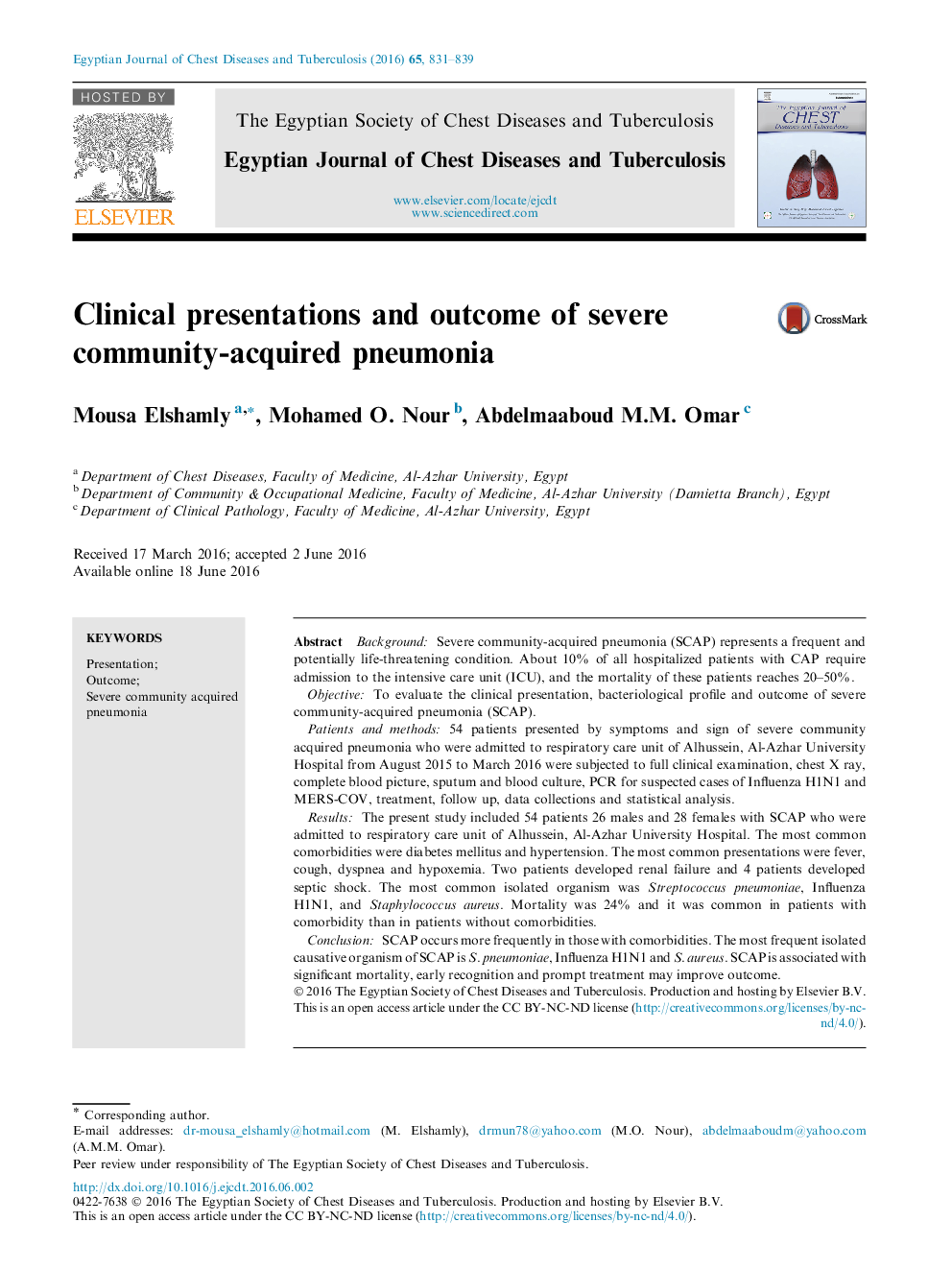| Article ID | Journal | Published Year | Pages | File Type |
|---|---|---|---|---|
| 3399807 | Egyptian Journal of Chest Diseases and Tuberculosis | 2016 | 9 Pages |
BackgroundSevere community-acquired pneumonia (SCAP) represents a frequent and potentially life-threatening condition. About 10% of all hospitalized patients with CAP require admission to the intensive care unit (ICU), and the mortality of these patients reaches 20–50%.ObjectiveTo evaluate the clinical presentation, bacteriological profile and outcome of severe community-acquired pneumonia (SCAP).Patients and methods54 patients presented by symptoms and sign of severe community acquired pneumonia who were admitted to respiratory care unit of Alhussein, Al-Azhar University Hospital from August 2015 to March 2016 were subjected to full clinical examination, chest X ray, complete blood picture, sputum and blood culture, PCR for suspected cases of Influenza H1N1 and MERS-COV, treatment, follow up, data collections and statistical analysis.ResultsThe present study included 54 patients 26 males and 28 females with SCAP who were admitted to respiratory care unit of Alhussein, Al-Azhar University Hospital. The most common comorbidities were diabetes mellitus and hypertension. The most common presentations were fever, cough, dyspnea and hypoxemia. Two patients developed renal failure and 4 patients developed septic shock. The most common isolated organism was Streptococcus pneumoniae, Influenza H1N1, and Staphylococcus aureus. Mortality was 24% and it was common in patients with comorbidity than in patients without comorbidities.ConclusionSCAP occurs more frequently in those with comorbidities. The most frequent isolated causative organism of SCAP is S. pneumoniae, Influenza H1N1 and S. aureus. SCAP is associated with significant mortality, early recognition and prompt treatment may improve outcome.
